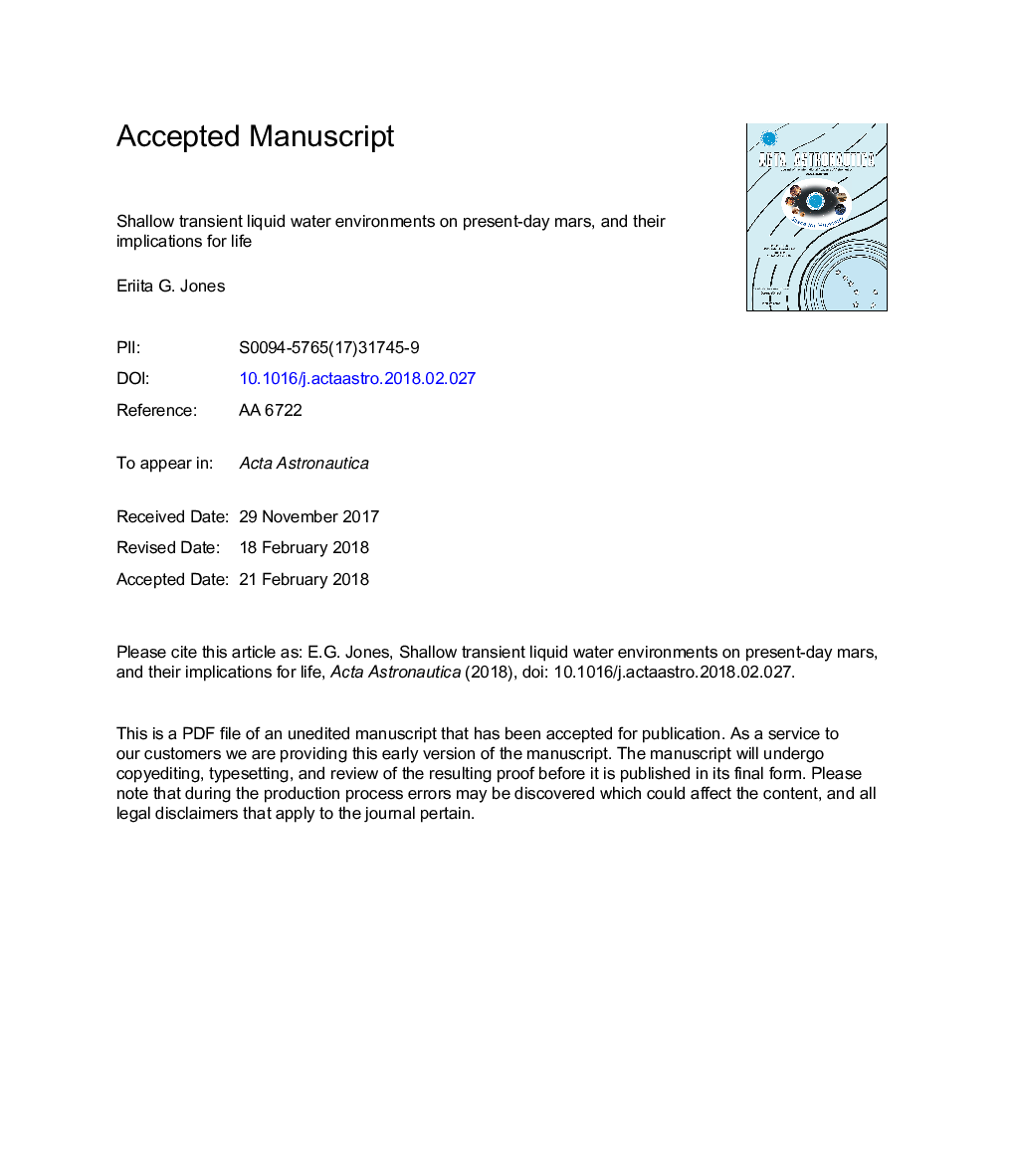| Article ID | Journal | Published Year | Pages | File Type |
|---|---|---|---|---|
| 8055585 | Acta Astronautica | 2018 | 16 Pages |
Abstract
The identification and characterisation of subsurface liquid water environments on Mars are of high scientific interest. Such environments have the potential to support microbial life, and, more broadly, to develop our understanding of the habitability of planets and moons beyond Earth. Given our current state of knowledge of life on Earth, three pre-requisites are necessary for an environment to be considered 'habitable' and therefore capable of supporting terrestrial-like life: energy, biogenic elements, and liquid water with a sufficiently high water activity. The surface of Mars today is predominately cold and dry, and any liquid water exposed to the atmosphere will vaporise or freeze on timescales of hours to days. These conditions have likely persisted for much of the last 10 million years, and perhaps longer. Despite this, briny liquid water flows (Recurrent Slope Linea) have been observed in a number of locations in the present-day. This review examines evidence from the Phoenix Lander (2008) and the Mars Science Laboratory (2012-current), to assess the occurrence of habitable conditions in the shallow Martian regolith. It will be argued that shallow, transient, liquid water brines are potentially habitable by microbial life, are likely a widespread occurrence on Mars, and that future exploration aimed at finding present-day habitable conditions and potential biology should 'follow the salt'.
Related Topics
Physical Sciences and Engineering
Engineering
Aerospace Engineering
Authors
Eriita G. Jones,
